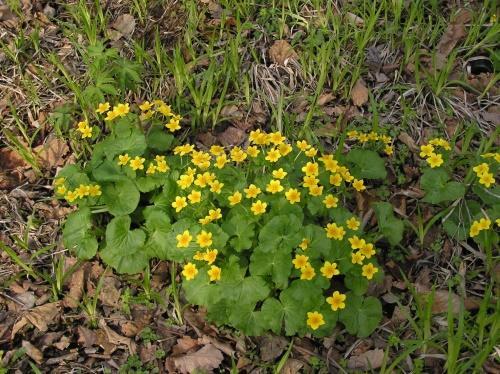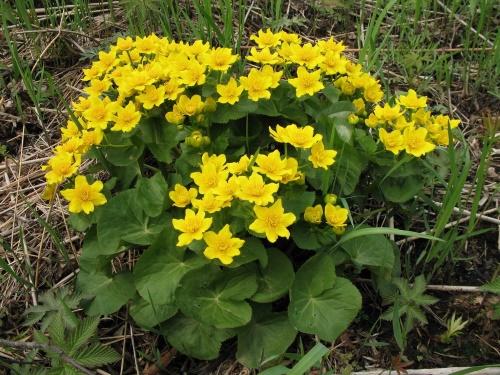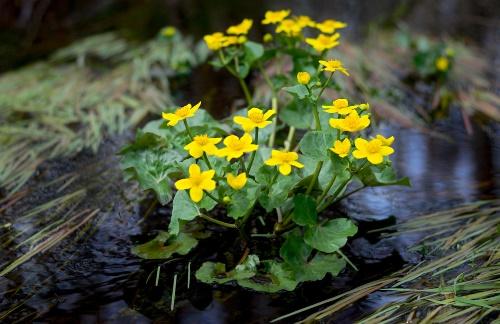Forest marigold will delight you with early flowering and gorgeous foliage

Flowering plants enjoy special attention of gardeners, but they always want them to remain decorative after flowering. Forest marigold is one of the unpretentious crops that blooms in early spring, but also retains a gorgeous look throughout the season. Given its high winter hardiness, it can be grown not only in the warm southern strip. The only thing the marigold needs is moisture. If you have a natural or artificial reservoir on your site, then you definitely need to plant it.
In natural conditions, the bushes have chosen wet swampy places. For this, they are popularly called marsh violets, toads, frogs and even marsh night blindness.
What is a plant

The maximum height of the bush does not exceed 60 cm, and leaves give it a special decorative effect. The diameter of the leaf plate can reach 18 cm, and the edges are gracefully wavy. If the bush is under the bright sun for a long time, the plates curl up. The leaf has a deep brown - green color, moreover, it is covered with gloss. The lower leaves are attached to the stem on long petioles (up to 15 cm). The higher the leaves grow, the shorter their petioles, and the upper foliage is generally sessile. Thus, the entire deciduous cap is well illuminated by the sun.
Over time, the lower leaves dry out and fall off, but the petioles themselves remain. By these black fibrous residues, you can recognize the forest marigold.
Bushes bloom early and not for long: the first buds bloom at the end of April. The flowers themselves are not very large, a maximum of 5 cm in diameter. But they are bright, golden-yellow in color, solitary or collected in small groups. By the beginning of summer, the marigold sets seeds in many-leaves.
The plant has medicinal properties, but is poisonous... However, after heat treatment of the plant part, the poison is destroyed.
Forest marigold - simple secrets of growing
 Given the natural need for a plant for moisture, it is better to plant it near water bodies. In the garden or on the flowerbed, the marigold will also take root, but only on condition of frequent and abundant watering.
Given the natural need for a plant for moisture, it is better to plant it near water bodies. In the garden or on the flowerbed, the marigold will also take root, but only on condition of frequent and abundant watering.
The swamp violet has no disadvantages, some advantages:
- does not get sick;
- pests do not like her;
- hibernates without shelter and is not afraid of even 35 ° frost;
- tolerates transplantation well (by the way, it is advisable to plant the bushes after 4 - 5 years);
- can grow in the shade and in the sun.
The marigold reproduces most often in a vegetative way by dividing the bush or by cuttings. If desired, you can sow seeds (in spring or before winter). In the latter case, it will bloom only after 3 years.